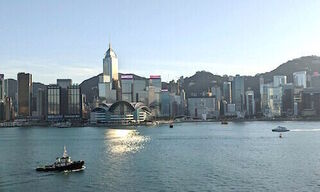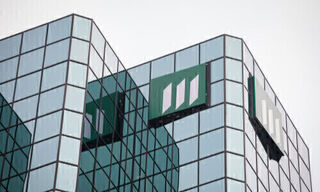Given the historical context of reversion to peak levels by virtue of a strong upswing in the Japanese equity market, investors might ask where we stand now, writes Carlo Capaul on finews.first.
finews.first is a forum for renowned authors specialized on economic and financial topics. The publishers of finews.asia are responsible for the selection.
‹Cruise around the town with a gold steering wheel, I'm hooked on having fun› as the Japanese rock/pop girl band Princess Princess (commonly referred to as Puri-Puri), sang in 1989. The U.S. pop icon Prince would doubtless have described such lyrics as a ‹sign of the times›, with Japan enjoying a so-called economic miracle that had endured for three decades, propelling the nation to the status of the world’s second-largest economy.
The wealth effect spawned by stock and real estate prices soaring to stratospheric heights undoubtedly fuelled the party spirit, but the music stopped playing abruptly on December 31, 1989.
«Very different investment world to 1989»
At this point, the market was trading at 51.1x earnings, having entered the 1970s at a modest price-to-earnings ratio of 11.1. Something had to give and it did. According to the MSCI Japan (gross dividends reinvested) index, yen and Swiss franc-based investors have yet to see their late 1989 investments in Japanese equities restored to parity, but the material devaluation of all other currencies has ensured that most long-term investors have, thankfully, not suffered the same fate.
Given this historical context of reversion to peak levels by virtue of a strong upswing in the Japanese equity market that began in 2012, some investors might come to the conclusion that caution is warranted and ask where we stand now?
In a nutshell, we are living in a very different investment world compared to that of 1989. From an evolutionary perspective, it is fascinating to note that investors in Japanese equities are now exposed to materially different sector risks than at the peak of the market. Financials and information technology companies are of much less importance than at the end of the 1980s, while the industrials, consumer discretionary, consumer staples and telecommunication services sectors have gained more influence.
«Long periods of underperformance appear less likely than in the past»
A further aspect of Japan’s evolution is that a large number of leading Japanese companies are much more integrated with the global economy than at the beginning of the 1990s. As a consequence, the Japanese equity market exhibits a much higher correlation with the global equity market these days, and long periods of underperformance appear less likely than in the past.
However, from a fundamental perspective, the extent of this correlation actually underrates the performance of corporate Japan. Over the last 10 years, listed firms have grown net earnings per share by 9 percent per annum. This is almost double the speed of listed companies in the U.S.
Today, interestingly, the U.S. market trades at a trailing price-earnings ratio of 21 times and Japan only on 13 times. While U.S. equities have once again demonstrated their resilience during 2018, there is no doubt as to which of these two markets appeals more in terms of valuation.
«Japanese equities trade at a discount»
A similar valuation case for Japan can be made in comparison to global equities. Despite the devastating stock market collapse Japan witnessed at the very beginning of the 1990s, Japanese equities have remained expensive for much of the ensuing period. But that is no longer the case.
Furthermore, Japanese equities also trade at a discount based on other valuation metrics and have been doing so since the end of 2013. Interestingly, this period coincides with a strong rally in Japanese equities and demonstrates that rising share prices have simply failed to keep pace with rapidly improving fundamentals.
For historical comparison, the dividend yield of the index stood at 0.5 percent when the market peaked in 1989. At that time the global dividend yield was around the same level as today (roughly 2.4 percent), while the dividend yield on Japanese equities has increased to 2.2 percent over the same period. Clearly, Japan trades at a premium on this measure, but that premium has virtually been erased and a poor dividend yield is no longer the investor deterrent it once was.
«The boat has yet to set sail»
And crucially, profitability has improved materially during the same period. The return on equity differential, relative to the global equity market has reached a very low level now compared to that seen throughout the preceding three decades.
From a fundamental perspective, the profits of Japanese firms could grow around 8 percent per annum over the next few years despite on-going trade disputes and financial market instabilities in emerging markets. Overall, information derived from companies suggests that a steady expansionary path is likely to continue.
Combine this with the historic low valuation metrics and it is quite intuitive why we are now at an attractive entry point for strategic investors. Although Japanese equities have rallied strongly in recent years, the fundamentals are sufficiently robust to suggest that the boat has yet to set sail. Overall, Japanese equities are worthy of an above-benchmark weight in global portfolios. This has yet to be reflected in aggregate positioning, but for how much longer?
Carlo Capaul is head of global equities and equity strategy at GAM Group. Previously, he worked as an investment strategist and senior portfolio manager at Swisscanto, as a director at van Vemde Portfolio Management and as a financial analyst and portfolio manager at UBS' asset management arm. He holds a degree in mechanical engineering from the Swiss Federal Institute of Technology and is a CFA charterholder.
Previous contributions: Rudi Bogni, Peter Kurer, Oliver Berger, Rolf Banz, Dieter Ruloff, Werner Vogt, Walter Wittmann, Alfred Mettler, Peter Hody, Robert Holzach, Craig Murray, David Zollinger, Arthur Bolliger, Beat Kappeler, Chris Rowe, Stefan Gerlach, Marc Lussy, Nuno Fernandes, Richard Egger, Maurice Pedergnana, Marco Bargel, Steve Hanke, Andreas Britt, Urs Schoettli, Ursula Finsterwald, Stefan Kreuzkamp, Oliver Bussmann, Michael Benz, Peter Hody, Albert Steck, Andreas Britt, Martin Dahinden, Thomas Fedier, Alfred Mettler, Brigitte Strebel, Peter Hody, Mirjam Staub-Bisang, Nicolas Roth, Thorsten Polleit, Kim Iskyan, Stephen Dover, Denise Kenyon-Rouvinez, Christian Dreyer, Kinan Khadam-Al-Jame, Robert Hemmi, Anton Affentranger, Yves Mirabaud, Katharina Bart, Frédéric Papp, Hans-Martin Kraus, Gerard Guerdat, Didier Saint-Georges, Mario Bassi, Stephen Thariyan, Dan Steinbock, Rino Borini, Bert Flossbach, Michael Hasenstab, Guido Schilling, Werner E. Rutsch, Dorte Bech Vizard, Adriano B. Lucatelli, Katharina Bart, Maya Bhandari, Jean Tirole, Hans Jakob Roth, Marco Martinelli, Beat Wittmann, Thomas Sutter, Tom King, Werner Peyer, Thomas Kupfer, Peter Kurer, Arturo Bris, Frederic Papp, Claudia Kraaz, James Syme, Peter Hody, Dennis Larsen, Bernd Kramer, Ralph Ebert, Marionna Wegenstein, Armin Jans, Nicolas Roth, Hans Ulrich Jost, Patrick Hunger, Fabrizio Quirighetti, Claire Shaw, Peter Fanconi, Alex Wolf, Dan Steinbock, Patrick Scheurle, Claude Baumann, Sandro Occhilupo, Claudia Kraaz, Will Ballard, Michael Bornhäusser, Nicholas Yeo, Claude-Alain Margelisch, Jean-François Hirschel, Jens Pongratz. and Samuel Gerber, Philipp Weckherlin, Michel Longhini, Anne Richards, Michael Welti, Antoni Trenchev, Benoit Barbereau, Pascal R. Bersier, Shaul Lifshitz, Klaus Breiner, Ana Botín, Michel Longhini, Martin Gilbert, Jesper Koll and Ingo Rauser.


























